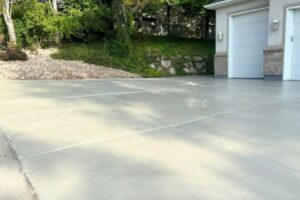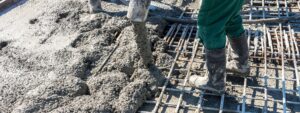Maintaining a durable and solid concrete floor involves addressing cracks promptly and correctly. Not all concrete floor repair methods are created equal, so knowing how to fix cracks efficiently can save time and money. Discover the best techniques for concrete floor crack repair in this guide. Water exposure can exacerbate damage, making timely intervention crucial.
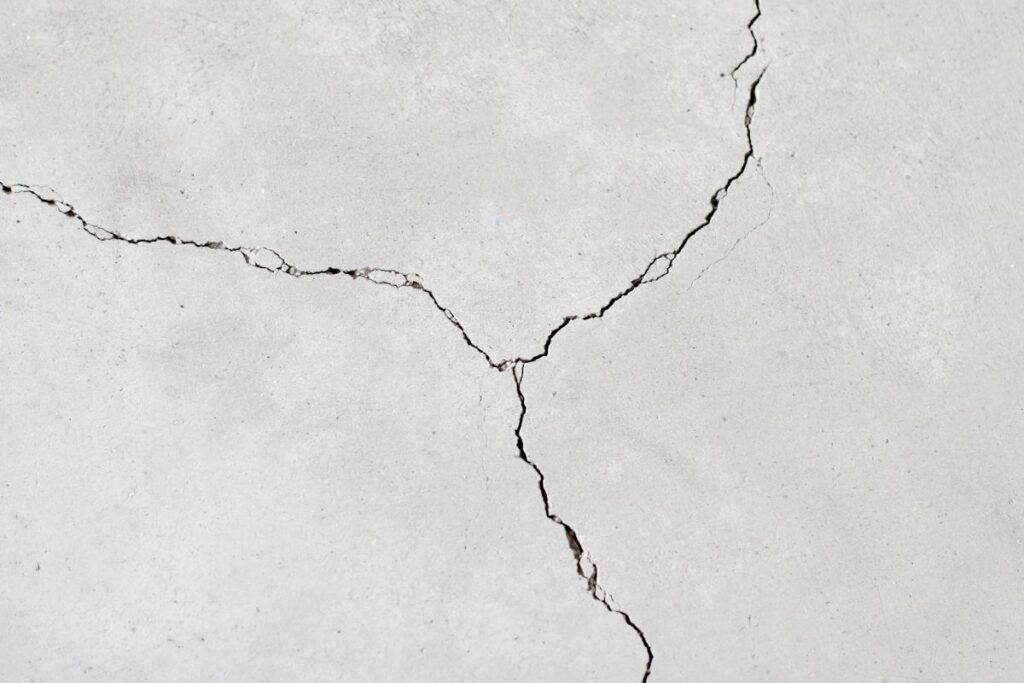
To effectively repair cracks, it is essential first to identify the type of crack—whether that is a hairline, structural, or expansion—and choose the appropriate repair method. Techniques range from filling minor cracks with epoxy or polyurethane to addressing more significant issues with concrete resurfacing or patching compounds.
Proper surface preparation and choosing high-quality repair materials are crucial to achieving lasting results. With the right approach, concrete floor crack repair can be straightforward and practical, ensuring the longevity and safety of your flooring. Understanding these methods will help you maintain a strong, aesthetically pleasing concrete floor that stands the test of time. To help you get started, here are some key things to know about concrete rack repairs
I. Understanding Types of Cracks in Concrete Floors
Identifying why cracks appear in concrete floors is fundamental to selecting the correct repair method. Poor waterproofing, inadequate floor drainage, or environmental stress can lead to these imperfections. Distinct damage patterns require tailored approaches, from applying an epoxy filler to simple caulk fixes. Understanding different crack types and learning how to fix cracks in concrete floors helps ensure a long-lasting repair that preserves the floor’s integrity and appearance.
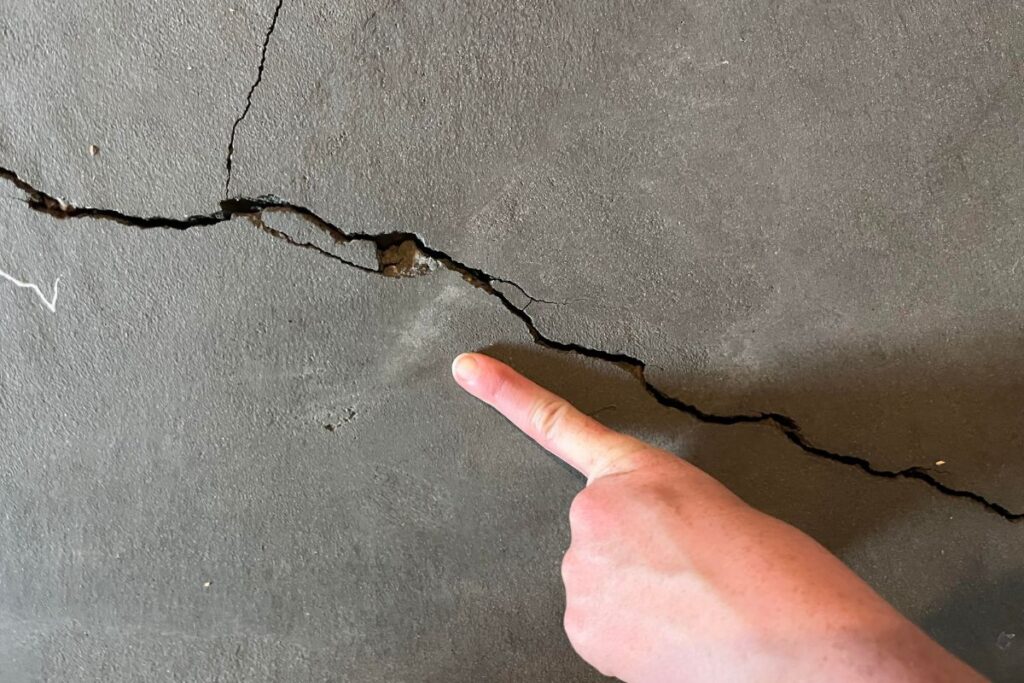
A. Why cracks occur in Concrete Floor
Cracks in concrete floors often arise from shifts in the soil beneath, reacting to environmental changes or the passage of time. Issues in the basement can occur when the concrete is overstressed without proper filler material to accommodate movement. Extreme temperatures without proper insulation in place can lead to concrete cracking due to high and low temperature fluctuations. Floors in the home can settle and lead to cracks forming when the cement mix used during construction is flawed. These factors contribute to weakening the concrete’s structure, leading to visible damage that requires attention before the entire surface becomes compromised.
B. Types of damage
Different environments and uses lead to various types of wear and tear on concrete surfaces. A concrete slab exposed to continual foot traffic becomes prone to varying stressors compared to a driveway frequented by heavy vehicles or a sidewalk battered by the elements. Damage to concrete slabs and foundational pours can vary, but it is important to note issues earlier to prevent further damage. Everything from small cracks, grapes, faking and cracking concrete, and major breaks in the slabs are all issues that should not be ignored! Any signs of damage to concrete is a sign of potentially serious issues lying underneath the surface.
II. Choosing the Right Crack Repair Method
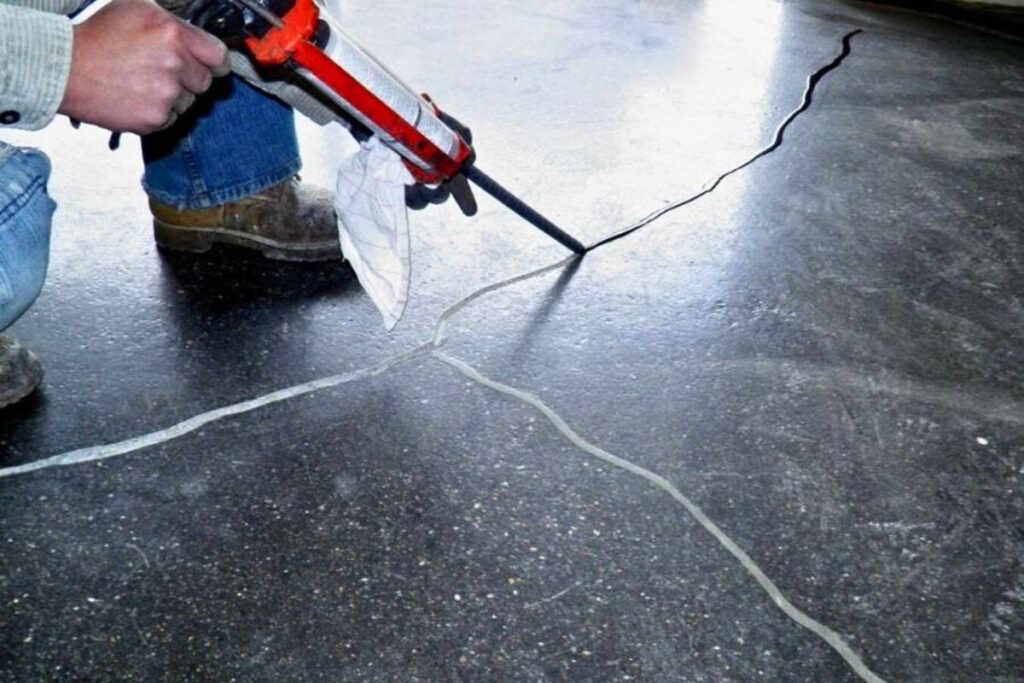
Choosing the correct concrete floor crack repair method depends on several factors, with the size of the crack being a primary consideration. The success of the repair hinges on matching the solution to the size of the crack and the skill level of the person doing the work.
A. Small cracks vs. large cracks
Treating small cracks in a concrete floor might simply involve cleaning the area with a wire brush and filling it with a polyurethane sealant. On the other hand, addressing large cracks typically requires a more extensive approach, incorporating the use of tools such as a chisel or a grinder to prepare the site before applying a more substantial filling solution like sand-infused grout.
B. DIY vs. professional repair
Deciding between a do-it-yourself approach and seeking “concrete slab repair near me” hinges on assessing the crack’s severity and your own skills. Simple patching tasks can often be tackled by homeowners equipped with suitable materials for minor basement floor repair. However, more complex problems affecting the foundation, such as those requiring concrete slab foundation repair, are best left to stucco professionals well-versed in adequately assessing and repairing concrete damage.
III. Methods for Filling Narrow Concrete Cracks
Correctly filling narrow cracks ensures the durability of a concrete floor, whether in a busy walkway or a sun-soaked patio. Homeowners and professionals alike have a variety of methods at their disposal. Considering the cost of concrete slab repair, these materials, combined with a quality concrete sealer, can extend the construction’s life span, and maintain its aesthetic value.
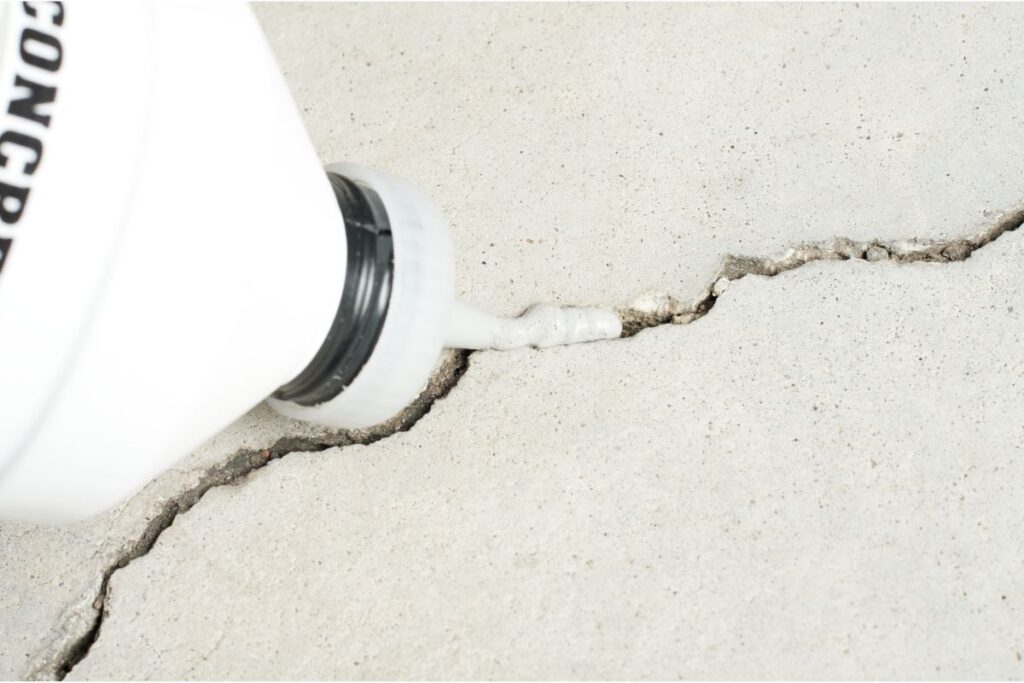
A. Caulk or liquid filler
For small, narrow cracks, caulk or a liquid filler proves effective, acting like an adhesive to seal the breach. A standard brush helps apply a thin coating over the crack, ensuring that it penetrates deeply while removing any loose particles. This method helps mitigate the stress placed on the concrete and prevents contact with materials like steel that could lead to further damage.
B. Polyurea injection material
Applying a polyurea injection material is a substantial option for maintaining a concrete foundation’s strength. The polyurea seals the crack thoroughly to guard against water penetration and corrosion. This technique is particularly vital in preserving the integrity of structures made with brick and other materials vulnerable to moisture damage.
IV. Techniques for Repairing Wide Cracks
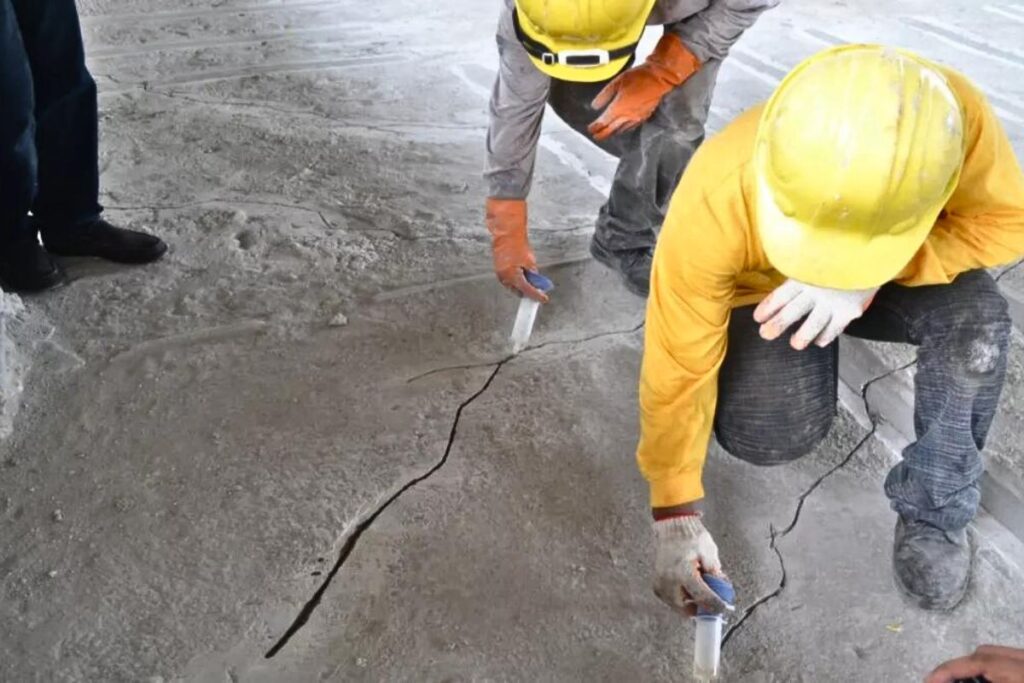
A more robust strategy is essential to restoring wider cracks in concrete floors. Simply filling larger cracks isn’t sufficient; instead, a comprehensive approach is required. These methods address the visible concrete damage and underlying issues, ensuring a long-lasting and durable repair. Proper preparation and application are vital to achieving practical results.
A. Breaking and widening the crack
A vital step in effectively repairing wide cracks in concrete is to initially break and widen the existing crack. This process creates a stronger bond when the repair solution is applied. Professionals typically use masonry tools to chisel the concrete carefully. They take extra caution not to damage any embedded rebar, which provides structural support, particularly in warehouse environments. After chiseling, they use a vacuum to remove debris, ensuring the area is clean for the filler material.
B. Using a flexible sealant
In repairing wider concrete cracks, a high-quality flexible sealant offers the adaptability required to endure the subtle moves a wall or floor is subject to over time. The application process may involve using an angle grinder to smooth the crack edges, ensuring a clean surface for the sealant to adhere to. Professionals handle the equipment with precision, mindful of the sealant’s terms of service, which usually stipulate the correct application pressure and environmental conditions to guarantee the longevity of the repair.
V. Tips for Preventing Future Cracks
To prevent future cracks, start with the proper groundwork. Lay a solid gravel base before pouring concrete to ensure a stable, well-drained subsoil. This reduces the risk of shifts and cracks by managing moisture, which can weaken concrete.
Regularly maintaining surrounding areas also helps extend the life of a concrete floor. Keep the lawn and landscape well-maintained to direct water away from the concrete surface, preventing pooling and seepage that can lead to cracking. Thoughtful lawn design and maintenance not only protect against moisture and shifting soil around the home but also add aesthetic value.
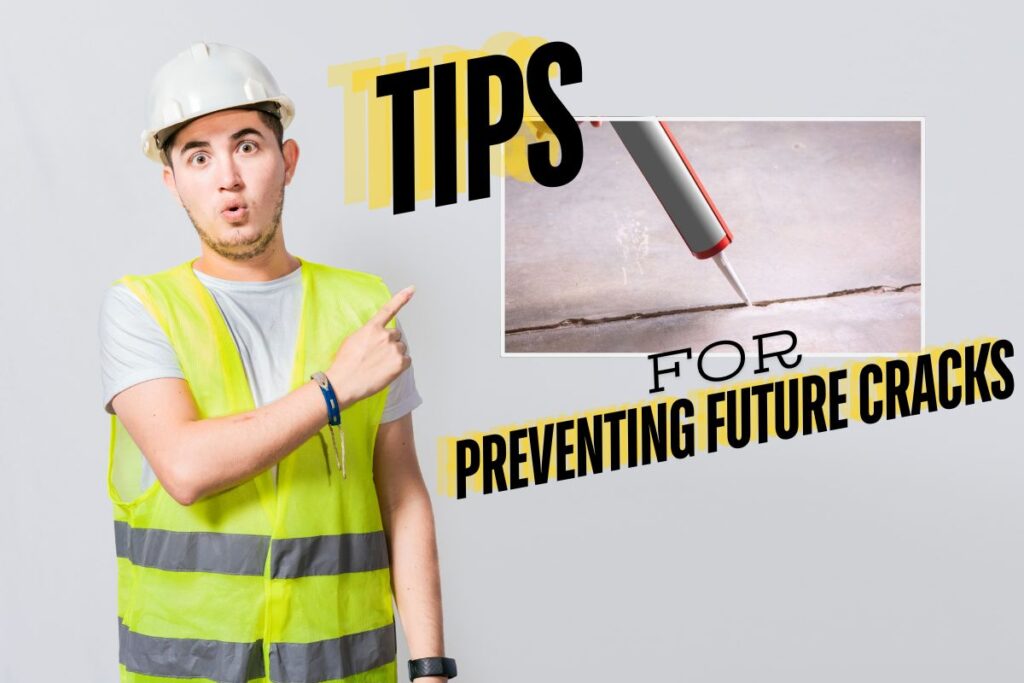
You can easily use liquid cement crack filler for minor cracks to fill in blemishes and prevent them from worsening. Concrete repair epoxy offers a robust and lasting solution for more extensive issues, reinforcing the floor against daily wear and tear.
Conclusion
Effective repair methods are essential to maintaining the structural integrity and longevity of concrete floors. For minor cracks, use caulk, while larger fissures may require polyurea injection for a durable fix. Regular upkeep, including proper groundwork and maintenance, can prevent future cracks. Using the proper preserves the floor’s appearance and functionality and saves time and money over the long term. Start the process today and stay ahead of any cracks or minor issues with the best concrete sealing and preventative methods available.


